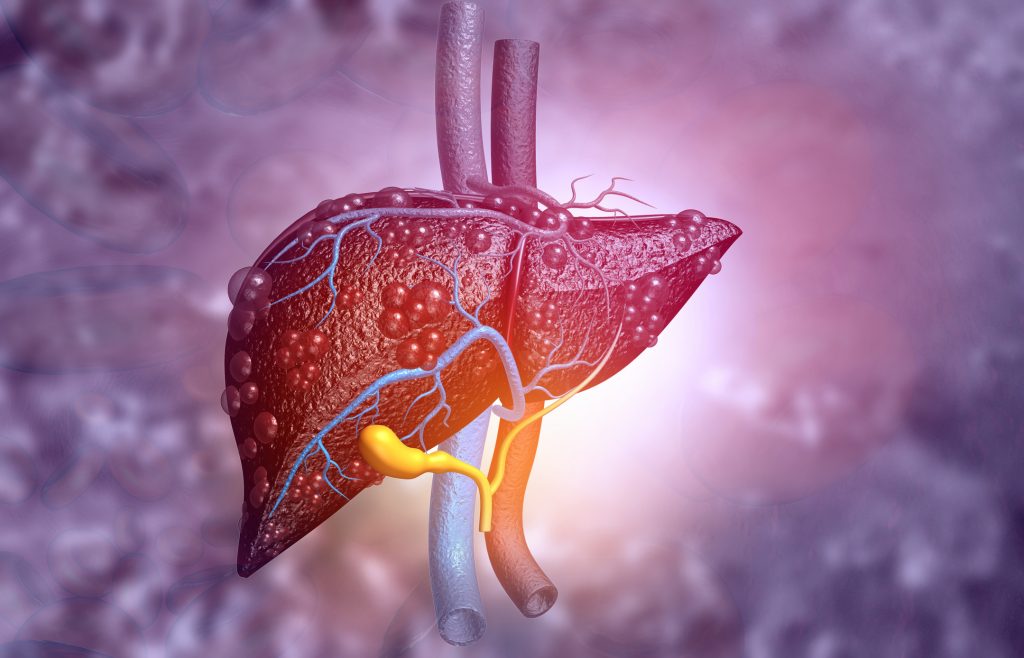Alpha-1 Antitrypsin Deficiency, or Alpha-1, is a genetic condition that can cause disease of the lungs, liver, skin, and blood vessels. The first descriptions of Alpha-1 pointed to its role in the promotion of lung disease in adults. But, in fact, Alpha-1 is primarily a condition caused by liver problems. And, it can affect your liver function in many ways, and lead to liver disease in newborns, children, and adults.
Download Liver Function and Alpha-1 – An Overview as a PDF.
To diagnose Alpha-1, first an AAT level test is done. Alphas have a low level of AAT in the blood. If your blood level is low, then genetic tests are needed to find out which abnormality is present in the AAT gene. If you don’t have a confirmed diagnosis of Alpha-1, ask your health care practitioner to test you.
AAT levels and your liver function
Your liver makes large quantities of Alpha-1 antitrypsin protein (AAT) and releases it into the blood. People who carry two abnormal genes for Alpha-1 produce an abnormal AAT protein. (The abnormal genes that can cause liver disease are usually “Z” genes. The “M” gene isn’t abnormal.)
Your liver cells can’t release abnormal AAT protein. The AAT builds up in the liver, causing low levels of AAT in the blood. Those low levels cause lung damage in Alpha 1. And, the buildup of Z protein in the liver causes liver damage.
Since most of the research into Alpha-1 liver disease has been performed on the Z protein, we will use Z as the basis for this guide. There are many other types of AAT gene variants that can cause Alpha-1. Some may have slightly different mechanisms.
Key learnings:
- Lung damage in Alpha 1 appears to be directly related to a low blood level of AAT
- A buildup of abnormal AAT protein in the liver causes liver damage
To understand how Alpha-1 affects your liver, it helps to understand how your liver functions under normal conditions.
What does normal liver function look like?
Synthetic function: It’s your body’s filter and distribution center.
Your liver makes many proteins and other substances your body needs to function. It also makes many components of the liquid, non-cellular portion of your blood. These substances help with:
- normal blood clotting
- getting energy to your body when you exercise or fast
- the distribution of salts, fluid, and nutrients through your bloodstream
Digestive Function: It helps you get nutrients from food.
Blood passes through your liver when it leaves your intestines. Nutrients from food are processed, stored, and distributed to other parts of the body.
Your liver also produces a substance called bile, which is stored in your gallbladder. When you eat, the bile drains into your intestine through the bile duct. It mixes with food to help with fat digestion and nutrient absorption.
Most of the bile moves into your blood, which transports it back to your liver. Your liver cells actually recycle the bile, for future use. Bile left behind in your intestine gives your stool its brown color.
Your liver has its very own unique blood supply called the “portal circulation.” This carries blood from the intestines and stomach to the liver and spleen. Portal circulation is a factor in some liver diseases.
Excretory Function: It’s a waste-removal system.
Your liver helps remove waste from the body by
- Cleaning toxins from the food you eat as blood from your intestines passes through it
- Processing some wastes into useful substances.
- Transferring other wastes into bile, which drains into the intestine and passes out in your stool.
- Clearing some drugs and medicine from your bloodstream, sending them out of your body in bile or urine.
For more in-depth information on this topic, please visit the Big Fat Reference Guide (BFRG). If you are enrolled in AlphaNet’s Subscriber Portal, you can access the BFRG here.
Download Liver Function and Alpha-1 – An Overview as a PDF.

